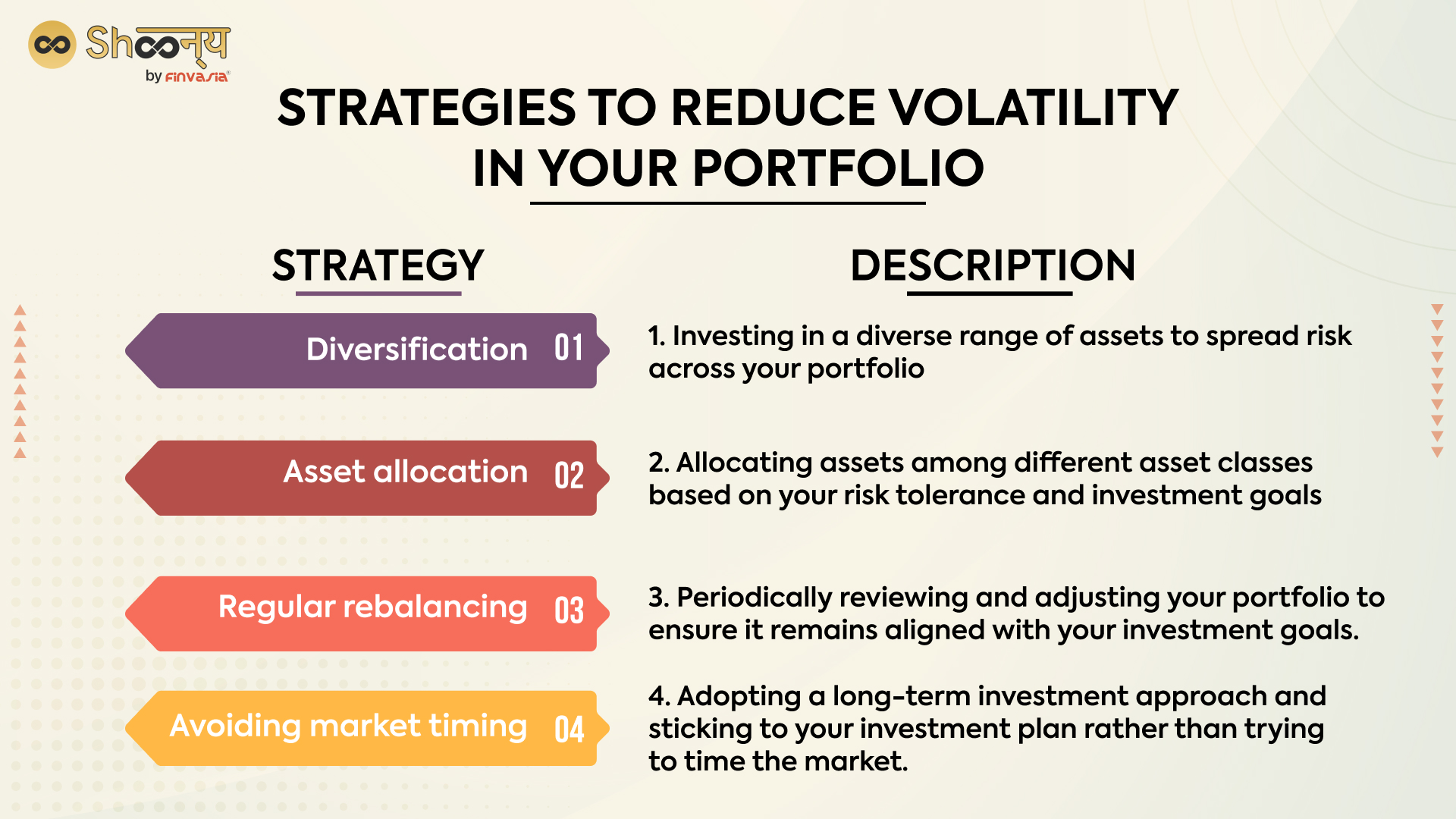With interest rate hikes, inflation, and international strife, it’s understandable that investors are apprehensive about the future. Large share market failures can be unsettling for investors, eliciting feelings of anxiety and concern. Such market volatility, however, is a typical element of stock markets that investors should expect. Investment returns fall when markets fall, potentially leaving investors with significant losses.
Does this imply that you should strive to sell when the market is “high” or sell if it begins to decline to limit the possibility of such unpleasantness? No, not always.
Let us walk you through the options for managing your portfolio during market fluctuations.
- Diversification:
Diversification is one of the most basic and crucial aspects of volatility management. Diversify your investment between shares, bonds, and other assets to assure your safety during market highs and lows.
A combination of asset types and investment vehicles in a diversified portfolio limits overexposure to any sector or commodity.
The technique is almost considered a need for a well-balanced portfolio that seeks to withstand market downturns.
- Investing in Dividends
Although it is not generally adopted, dividend investment must be used as an additional hedge against volatility. As a prudent investor, you should be aware that the dividend component is usually paid, and there is less danger. This understanding aids in security’s normalization.
The return is lower than the volatile offerings since the risk and volatility are lower. However, with reinvested dividends, you can buy more shares of the same security over time, minimizing risk over a long enough time frame.
When you invest in dividends, your portfolio’s volatility diminishes since dividend-paying assets often have more predictable returns.
- Alternative Market Assets-
Alternatives such as hedge funds, commodities, and real estate can be considered. These investments can reduce portfolio susceptibility to traditional asset groups while also compensating for overall portfolio volatility.
- Hedge funds are the best way to ensure protection against global market fluctuations.
- Commodities- Investing in commodities can provide diversification, inflation protection, and positive excess returns.

4. Cash
Cash is the most cost-effective and easy solution to protect your wealth from market volatility. Selling your positions and increasing your cash allocation entirely protects you from short-term market swings. Cash is the asset type with the lowest association with other asset classes and offers the most downside protection in portfolios.
However, because inflation constitutes a real threat to cash, it should not be kept inert. The primary benefit is its simplicity and ease of implementation while investing in the share market.
5. Make use of Options
You can always strategize by buying long puts, which can be used with most liquid broad-based index ETFs to directly hedge volatility in specific areas of a portfolio. Most of these instruments are short-term and require continual customization and maintenance, making the cost of hedging less attractive and tax-inefficient.
Selling the call option and buying long puts at the same time can be utilized to earn premium revenue and/or pay for portfolio hedging.
How Can a Portfolio’s Risk Be Reduced?
Diversifying your investments, avoiding excessively volatile stocks, and maintaining some cash that is generally safe from market volatility can all help to decrease portfolio risk.
What Factors Influence Portfolio Volatility?
The underlying instruments and price changes determine a portfolio’s volatility. If your portfolio is heavily invested in a particular asset, you are bound to experience market shocks on your expected return.
However, if you select less risky investments and concentrate on diversification, your portfolio will be less vulnerable to share market downtrends.

